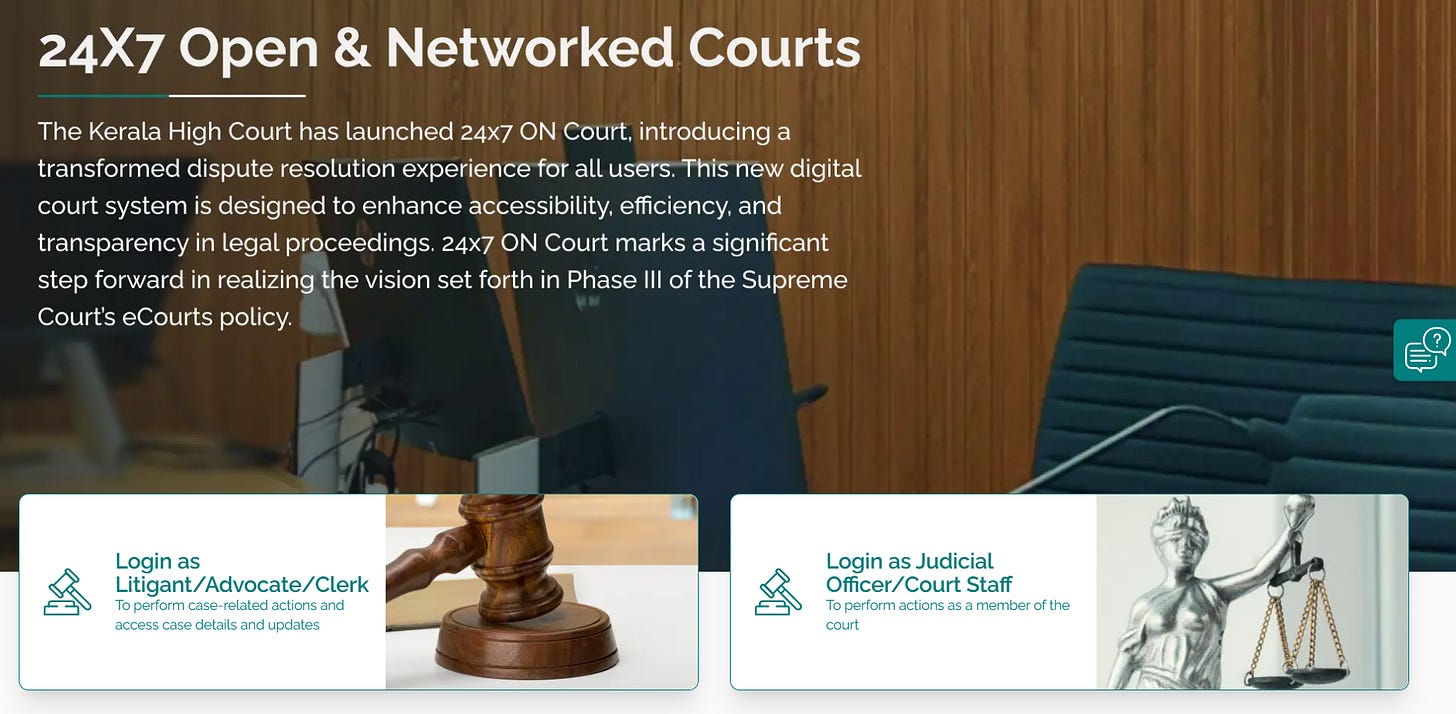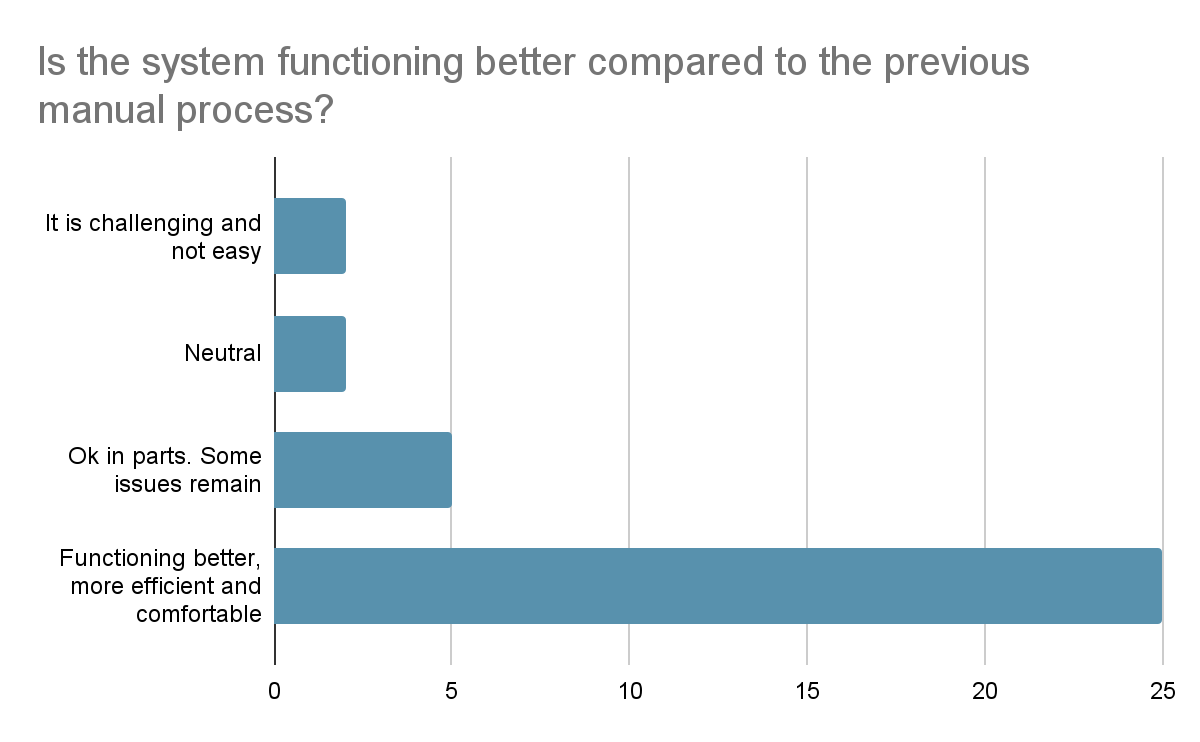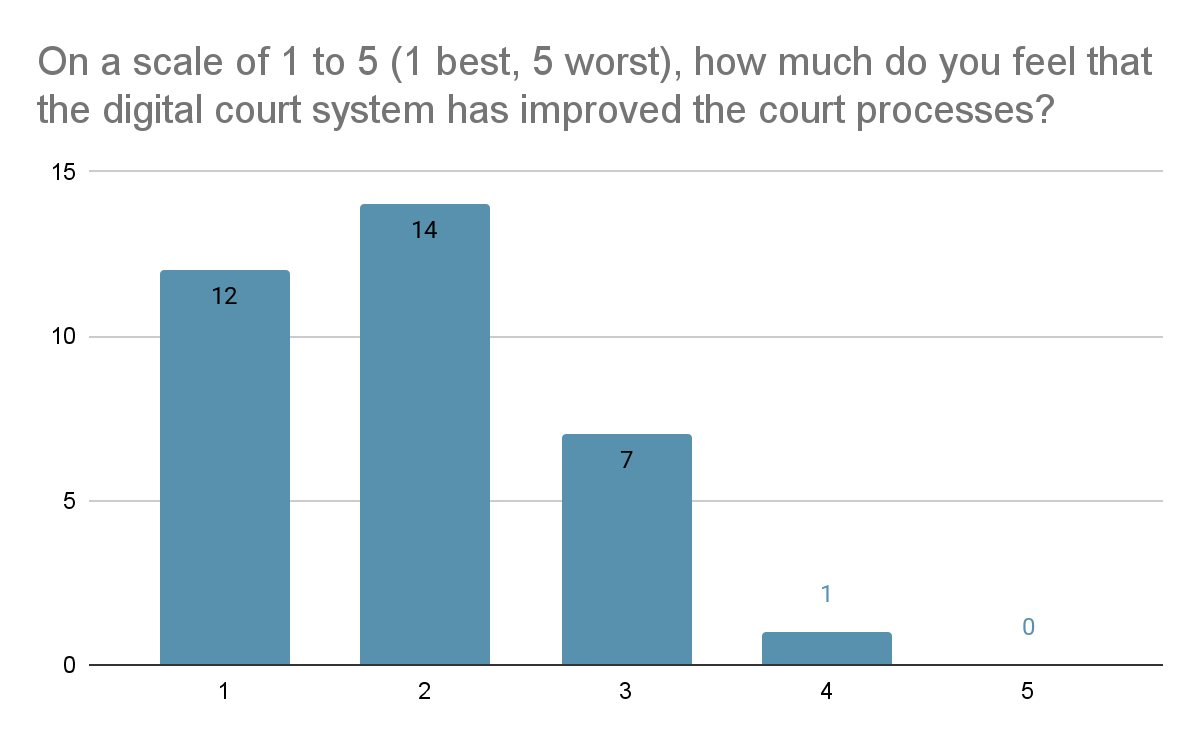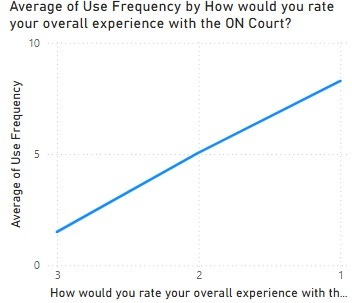Understanding the ON Courts System at Kollam
Results from a Perception Study of the Legal Reform and Identifying What it Does to the Judicial System
Institutions are the central nervous system of a country. Economists Daron Acemoglu and James Robinson, in their book ‘Why Nations Fail’, suggest that institutions determine the success and failure of nations. Inclusiveness and the strength of institutions impact all aspects of a country's social, economic, and political life.
The judiciary is undoubtedly one of the most important institutions in a country's political system. The Indian judicial system has long been critiqued for being slow to deliver justice, with large pendencies and undertrials, a low number of judges, poor infrastructure, and administrative logjams.
In such circumstances, PUCAR’s 24x7 ON Courts system in the Kollam District Court offers an innovative, tech-driven solution. ON Courts aims to reduce the administrative hurdles of the traditional court system through the digitisation of clerical and administrative processes. It further aims to increase accessibility, efficiency, and transparency in legal proceedings.
We, Nayaneethi Policy Collective (NPoC), conducted a perception study among advocates and litigants who had experienced the new system, yielding promising views of the system. While it was unusual for the judiciary (Kerala High Court and Kollam District Court) to allow private participation, the overwhelmingly positive response of the users suggests it was an intervention that holds promise.
In this article, we look at the ON Courts system and share our learnings from our study.
ON Courts System
24x7 ON Courts is a platform for digitising the court system. As a pilot, PUCAR launched the project in the Kollam District Court for all Section 138 (cheque bounce) cases.
In the traditional court system, the plaintiff formally presents their case through their lawyer. This requires physical filing, document submission, and a court fee payment. Following this, the court scrutinises the case, and a summons is issued if the furnished details are satisfactory. These steps consume a lot of time due to paperwork and physical scrutiny. Advocates say that these initial steps take anywhere between one to two months. Even after the issue of summons, the defendant might not appear in court on the specified date, creating further delays.
This is where the ON Courts system creates a major difference. In ON Courts, the entire system of case filing, scrutiny, and summons is made online. This eliminates administrative and logistical delays, speeding up the case cycle. Furthermore, neither the plaintiff nor the defendant has to physically appear in court, and can handle all case-related matters online.
This technology is expected to create a large transformation in the judiciary. It will ease the administrative work being done by both judges and advocates, and speed up case processes and reduce pendency. The transparency and ease it brings for litigants is also expected to increase trust in the system.
Perception Study
We interviewed advocates and litigants to identify what they feel about the new ON Courts structure. The responses point to general acceptance among advocates. While the litigants remained largely dependent on advocates for legal procedures, they too perceived that the case proceedings were moving quicker.
The advocates, whether individual or from a law firm, agreed that the system streamlined and accelerated the process of case filing as well as other proceedings, such as tracking the next hearing and updates on the case progress. Increased transparency was one critical point appreciated by the advocates and litigants alike.
In the chart below, we look at how advocates feel the ON Courts system compares to the manual court systems and their opinion on whether the system improved processes:
As we can see, there is an overwhelmingly positive response to the changes brought by ON Courts. This acceptance of a drastic change in a Government institution, that too the judiciary, was something we didn’t predict when we began the survey process.
On the litigants’ side, there was a genuine perception that cases became less time-consuming. While the litigants, for various reasons, did not usually access the ON Courts portal, they did find the SMS system to be useful in case tracking.
The primary challenges, according to the advocates, were the steep learning curve and initial technical glitches. Interestingly, our survey revealed that the more advocates used the system, the higher their ratings were (see chart below). As evident, as the average use frequency by advocates increased, they gave a higher rating (here, 1 was the highest and 3 the lowest rating).
Transforming the Judiciary
The study revealed challenges of introducing a new digital system in the judiciary. From problems of adaptation to doubts about losing the traditional infrastructure of courts, the advocates we interviewed presented some concerns.
But the complicated challenges of the Indian judiciary require an intervention like ON Courts. According to the National Judicial Data Grid, there are more than 4.5 crore pending cases across India, among which more than 3 crore cases are more than 1 year old. Regarding the number of judges, the India Justice Report 2025 says there are only 15.9 judges per million population in India. This is when the Law Commission in 1987 recommended that there should be at least 50 judges per million population.
These data highlight a critical shortage of judges in India, a country that is grappling with a rapidly growing backlog of cases. In such a context, judges become an invaluable resource whose time and expertise must be utilised optimally. This requires reducing their administrative burdens and streamlining judicial processes. It will allow them to focus on their core function, which is to adjudicate cases.
A more efficient judiciary not only ensures timely justice but also has socio-economic implications. Research indicates a strong connection between judicial capacity and firm growth in India. This underscores the judiciary’s role in spurring economic development. Moreover, a robust judicial system is essential for upholding justice and acting as a safeguard against state overreach. This is vital for any society to thrive.
Scaling Up
The ON Courts initiative holds promise in addressing the long-standing inefficiencies within the judicial system. Our study demonstrates that the two important stakeholders, advocates and litigants, have positive perceptions about the system. The pilot project in Kollam, if successfully scaled across courts in Kerala and beyond, has the potential to bring about meaningful and much-needed reform in the Indian judiciary.










